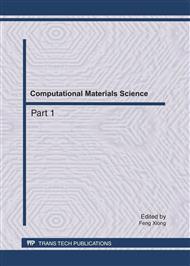p.1470
p.1473
p.1476
p.1480
p.1484
p.1488
p.1494
p.1500
p.1508
The Radar Signal Feature-Separability Model Analysis
Abstract:
The one-dimensional feature-separability model concerning the feature-separability issue of radar emitter signals is proposed based on the probability theory and statistical theory, to evaluate the deinterleaving and recognition capability of extracted features. The proposed method is applied to analyze convention features of radar emitter signals. The theoretical analysis and experimental results show that the proposed model offers a new way to analyze the validity of extracted features, and is valid in both the original feature space and linear-transformed feature space.
Info:
Periodical:
Pages:
1484-1487
Citation:
Online since:
July 2011
Authors:
Price:
Сopyright:
© 2011 Trans Tech Publications Ltd. All Rights Reserved
Share:
Citation:


